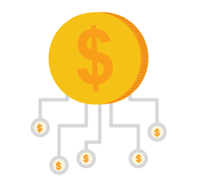Tax Strategies
If you’re saving for your retirement, you want to ensure that as much of your hard-earned money as possible goes into savings.
You have to pay taxes, but it’s important not to make the mistake of paying more than you have to. A tax strategy can help you to maximize your earnings, now and in the future, making the most of your long-term outlook, so you keep as much of your money as possible.
Why Use Tax Strategies for Retirement Savings
If you’re thinking about a tax strategy, you probably want to determine if you actually need one. The first step is normally asking questions about your finances and your situation.
If you can’t clearly answer any of these questions, it may be a good idea to have a tax specialist analyze your current strategy or situation and build a strategy around your needs. The IRS heavily incentivizes saving for the future. That’s why tax-exempt annuities and contributions exist. Most of us can make contributions to retirement plans and college funds for tax deductions or, in certain circumstances, even credits.
Tax strategies can help you to take advantage of those laws to:

Choose account options that suit your needs now and in the future

Diversify your accounts to maximize tax benefits

Diversify investments to reduce total tax
Your tax strategy might also extend well beyond retirement savings. For example, it can include strategy to:
Your tax strategy will heavily depend on your circumstances, cash flow, debts, and savings goals. You need a tax professional to review what you have now to determine what your strategy should be. Tax is often our largest expense, but careful tax planning can free up a considerable amount of money, which will help you as you move towards your saving goals. If you’re entitled to a tax reduction, the experts at Tangent Retirement will help you get it.
Roth Conversions as a Retirement Savings Tax Strategy
Your tax strategy will heavily depend on your income, portfolio, passive income, and savings goals. One of the most common strategies used to reduce total tax while optimizing value of retirement savings is to use a Roth conversion to change traditional IRAs into Roth IRAs.
Roth Conversion
A Roth Conversion entails converting your traditional IRA into a Roth IRA.
This is beneficial for many reasons. The primary is that a Roth IRA allows you to invest without paying capital gains tax on assets. Money can compound in your account without increasing your tax bill later. You also won’t pay taxes when withdrawing money from your account, providing you meet requirements.
| Income Tax | Capital Gains Tax | Withdrawal Limits | Contributions | |
|---|---|---|---|---|
| IRA | On Withdrawal | Yes | 10% tax if withdrawn before 59.5, 50% tax on minimum deductions if not withdrawn before age 72 | $6,000 ($7,000 for 50+) |
| Roth IRA | Taxed on Deposit | No | None | $6,000 ($7,000 for 50+) |
This can be hugely advantageous if:
What You Need to Know

Essentially, you need a strategy to determine how and when to convert your IRA. For example, you may want to portion conversions out over several years to avoid moving up into a higher tax bracket. You may also want to diversify investment accounts to maximize total deductions and tax benefits now. Eventually, the question is, which strategy will offer the most benefits long-term? The answer can be very complex, which is where a tax advisor comes in.
Backdoor Roth IRA
While the Roth IRA has a lot to offer, not everyone qualifies. For 2020, federal limitations on contributing to a Roth IRA are:
- Modified Gross Income of $139,000 or less for an individual
- Modified Gross Income of $206,000 for married or joint filing individuals
A backdoor Roth IRA allows you to move funds from a traditional IRA into a Roth IRA, so it can accumulate capital gains without increasing capital gains tax. This process is similar to converting your IRA to a Roth IRA but will require some additional paperwork.
Backdoor Roth 401(K)
The backdoor Roth 401(k) offers all the benefits of the 401(k), with some extras. About half of all employer plans now offer a Roth 401(k) option. Here, the primary difference is that the Roth 401(K) is taxed on deposit, meaning that you can invest it without capital gains tax.
This means:
Setting up a Roth 401(k) means you can benefit from employer matching and contributions, while building income that is tax-free on withdrawal. In addition, you can roll a Roth 401(k) over to a Roth IRA without facing a tax penalty.
Tax strategies are complex and you will often need custom advice based on your specific situation. If you’re ready to get started, contact the experts at Tangent Retirement for more information.
